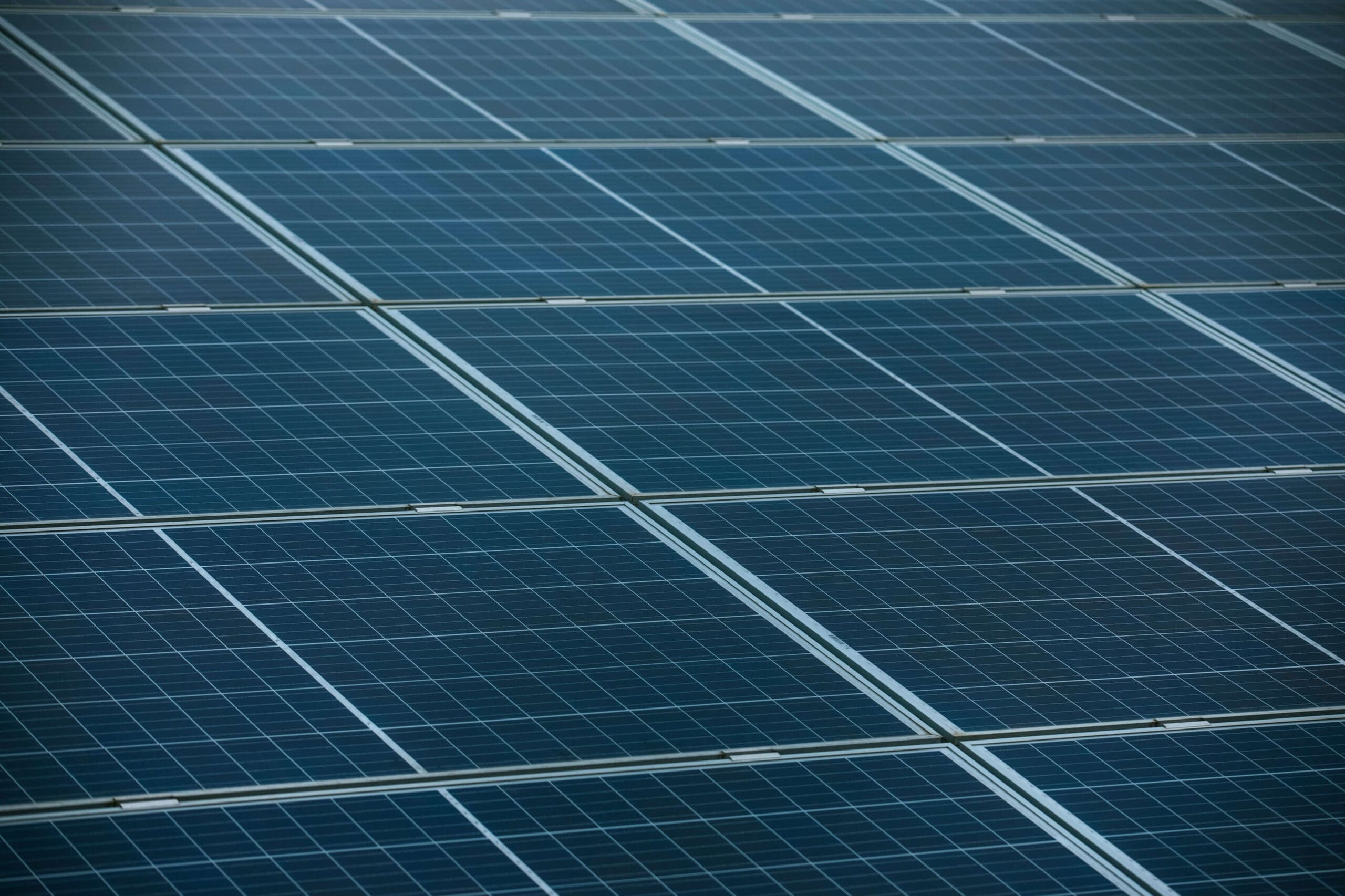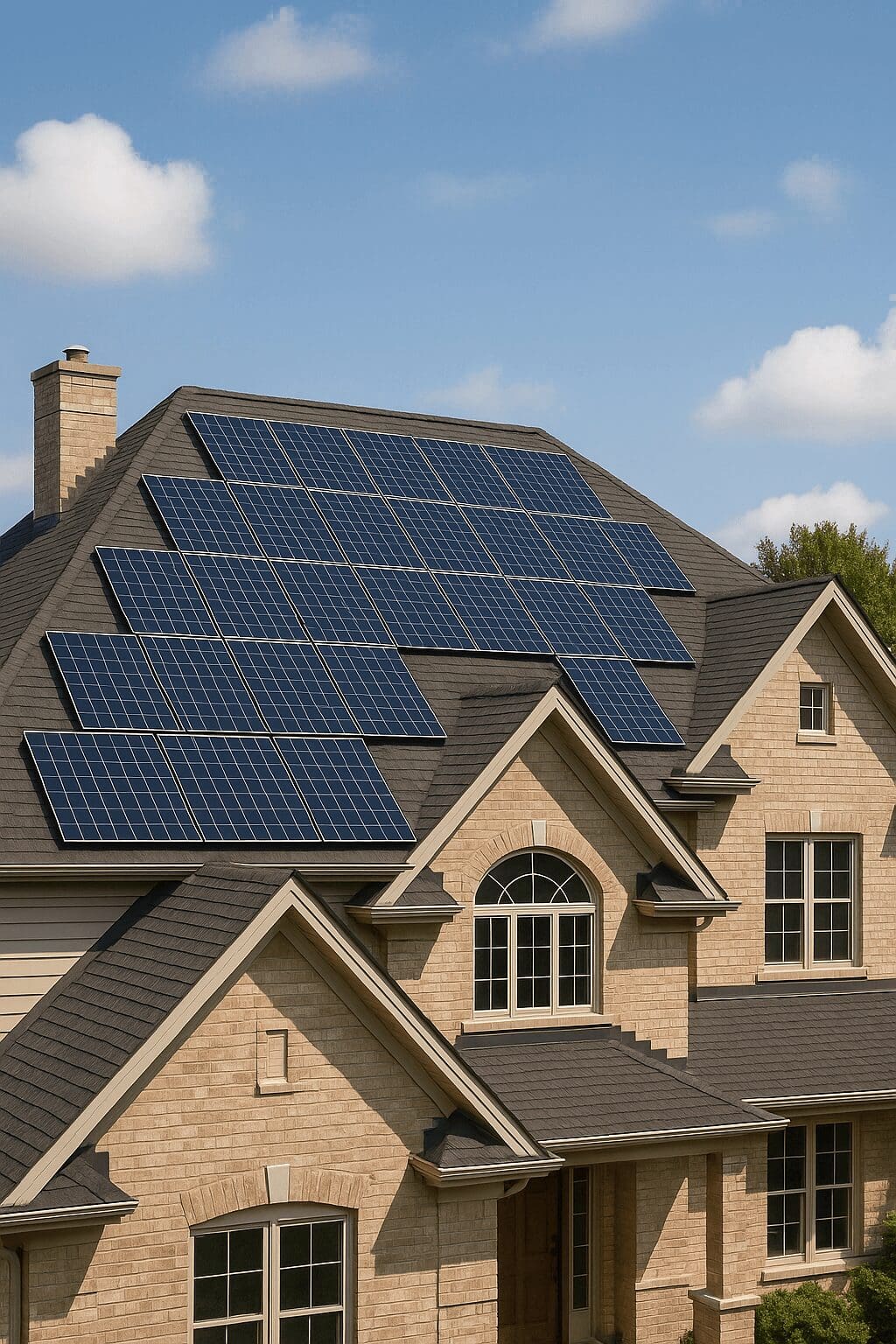Every day, the sun bathes the Earth in an astonishing amount of energy—far more than humanity could ever use. In fact, in just one hour, enough sunlight strikes the planet to power the entire world’s electricity needs for a year. Yet for most of history, we’ve relied on fuels buried deep underground instead of tapping into the limitless power of the sun shining overhead.
Solar energy is abundant, cost-effective, and incredibly accessible. Scientists and engineers have found ways to harness sunlight and convert it into electricity using solar panels, which are those sleek, glass-like surfaces you’ve probably seen on rooftops or in fields. Inside each panel are photovoltaic (PV) cells, which play a fascinating role in capturing solar energy.
Here’s how it works: when sunlight strikes a solar panel, it sets off a tiny electrical reaction inside the PV cells. Sunlight contains energy in the form of photons, which excite electrons within the cells. This movement creates an electrical current, which is then converted into usable power for your home.
Think of it like this—your rooftop solar panels are tiny power stations, working silently to turn sunlight into energy you can use for lighting, appliances, and everything in between.
Solar technology has been around for decades, but early systems were bulky, expensive, and inefficient. Fortunately, advancements in materials and manufacturing have transformed rooftop solar into a powerful, cost-effective energy solution for homeowners today. Panels are more efficient, installations are more affordable, and new smart technologies allow people to track their solar energy production in real time.
The future of solar is brighter than ever. With ongoing breakthroughs in panel design, battery storage, and energy management, solar is becoming an even more accessible solution for homeowners everywhere.
The Rise of Rooftop Solar: A Brief History
Solar technology has come a long way, and it’s a story filled with innovation, perseverance, and even a few surprises along the way.
Early Days: Solar Takes Flight (Literally)
The idea of harnessing sunlight for energy isn’t new. In fact, scientists began experimenting with solar-powered electricity as early as the 1800s and the first solar cell was invented in 1876. But the first truly practical solar cells weren’t developed until the 1950s, and their debut wasn’t in homes or businesses, but in outer space.
In 1958, NASA launched Vanguard 1, the first satellite to run on solar power. It was a game-changer. Suddenly, solar wasn’t just an experimental technology, it was powering space exploration. For years, solar panels remained a niche technology, used mainly for satellites, research stations, and remote applications.
The 1970s: Solar Steps onto the Global Stage
The 1970s energy crisis sent shockwaves around the world, as countries scrambled to reduce their dependence on energy imports. This moment gave solar a boost in visibility, with governments starting to invest in renewable energy research. Still, solar panels remained expensive and inefficient, making them impractical for widespread use.
The 1990s–2000s: Rooftop Solar Starts to Shine
By the 1990s, something exciting happened: solar technology got cheaper. Scientists figured out ways to improve efficiency, manufacturing costs started to decline, and suddenly, homeowners saw real potential in rooftop solar systems.
Governments played a key role, introducing incentives and rebate programs that helped homeowners offset installation costs. Countries like Germany, Japan, and the U.S. led the charge, offering feed-in tariffs (programs that paid homeowners for extra solar electricity they sent back to the grid). This kickstarted the rooftop solar revolution.
Fun fact: In 1999, the world’s largest solar power plant was only 3 megawatts—about enough to power 600 homes. Today, we have solar plants exceeding 2,000 megawatts, capable of powering over a million homes!
The 2010s–Today: The Solar Boom
Fast forward to today, and solar power has exploded in popularity. The cost of solar panels has dropped by over 80% since 2010, making them more affordable and accessible than ever.
At the same time, improvements in battery storage and energy monitoring systems have allowed homeowners to maximize their solar savings. Instead of worrying about cloudy days or nighttime energy use, homeowners can store excess solar power in home battery banks. This shift has transformed solar from an intermittent energy source into something reliable and self-sustaining.
And here’s an even wilder fact: The amount of sunlight that hits Earth every second contains enough energy to power over 100,000 homes. The challenge has always been harnessing it efficiently—but with smarter technology, cheaper storage, and better energy policies, the solar revolution is just getting started.
How Modern Rooftop Solar Works—Reliable, Efficient, and Built for Today’s Homes
Powering Your Home with the Sun
Imagine waking up each morning knowing your home is running on energy from your own rooftop—no unexpected price hikes, no dependency on unpredictable utility rates. That’s the beauty of modern rooftop solar.
Whenever the sun shines, your solar panels work quietly, capturing sunlight and converting it into electricity. Your lights, appliances, and devices all run effortlessly, reducing your reliance on the grid and cutting your electricity bill.
But rooftop solar is as much about producing electricity, as it is managing energy intelligently, ensuring you have power whenever you need it.
Energy Independence—No More Guesswork
Net Metering
Banking Your Solar Power On sunny days, your panels may produce more electricity than your home needs. Instead of wasting that excess power, it flows into the grid, earning you credits from your utility provider. Later, when your system isn’t generating enough (like at night), you can pull electricity back from the grid using those credits—so even when the sun isn’t shining, you’re still saving money.
Solar Batteries
Energy on Demand Want full control over your electricity? Instead of sending excess power into the grid, store it in a battery, like the Tesla Powerwall or similar systems. This creates a personal energy reserve, ensuring your home stays powered even during cloudy days, at night, or in outages.
Smart Monitoring at Your Fingertips
The latest solar installations include real-time energy tracking, letting you monitor your electricity production, storage, and consumption from an app. You’ll know exactly how much energy your system is generating, when you’re using it, and how much you’re saving, all with just a few taps.
The Best Solar Panels Yet—Designed for Maximum Power
Gone are the bulky, inefficient panels of the past. Today’s systems are sleek, powerful, and built for peak performance:
- Bifacial solar panels capture sunlight from both the front and back, boosting power output without taking up extra roof space.
- Advanced coatings and materials reduce energy loss, meaning more sunlight gets converted into usable electricity.
- Durable panel designs last 25+ years with minimal maintenance, making solar a long-term investment in energy savings.
Hassle-Free Installation That Won’t Damage Your Roof
One of the most common concerns about rooftop solar is whether mounting panels will damage a home’s roof. The reality is, solar has been installed on rooftops for decades, with very few reported issues when done correctly.
Homeowners have been installing solar panels on their roofs since the 1970s, and over the years, the technology and installation methods have evolved dramatically. Today’s systems are sleek, secure, and designed for long-term durability, ensuring that solar integration is a low-risk, high-reward upgrade.
A System That Works for Every Roof
Regardless of the mounting method used, modern installation techniques ensure solar panels are safely and securely attached to your home, while preserving the structural integrity of the roof beneath them.
Solar installers use two primary mounting methods, depending on your roof type:
- Non-invasive mounting: For certain types of roofs, installers use ballasted systems or adhesive-based mounts that do not require drilling. These methods are commonly used on flat roofs and in some specialized residential applications, ensuring panels stay securely in place without penetrating the roofing materials.
- Standard mounted systems: Most rooftop solar installations use secure attachment points that do require drilling into the roof structure. However, these systems include professional-grade flashing and sealants, preventing leaks and protecting the home’s envelope. When installed correctly, solar panels do not compromise the roof’s integrity, and can actually shield the underlying roofing material, extending its lifespan.
Decades of Installations, Minimal Issues
For more than 50 years, homeowners have chosen rooftop solar as a smart investment, and installation methods have been fine-tuned to perfection.
Modern solar mounting techniques are engineered for all roofing types, whether you have shingles, tile, metal, or flat surfaces. Studies show that properly installed solar panels do not cause leaks, structural damage, or any premature roof failure.
Built to Handle Harsh Weather
Think solar panels are fragile? Think again. Today’s panels are engineered to withstand extreme conditions:
- Heavy snow & wind: Reinforced designs prevent damage from high winds and snow buildup.
- Rain & hail: Tempered glass and protective coatings shield against rough weather.
- Heat & cold: Panels are built to perform in scorching summers and freezing winters, ensuring consistent power year-round.
Why Rooftop Solar Is the Smart Choice Today
With more efficient panels, smarter energy management, and roof-safe installation, rooftop solar today is more accessible and reliable than ever.
No bulky equipment, no complicated installation—just powerful solar technology, working effortlessly to lower your bills and give you control.And here’s something mind-blowing: if just 0.3% of Earth’s surface were covered with solar panels, we could generate enough electricity to power the entire world. That’s the untapped potential you’re unlocking—right from your own rooftop.
The Future of Rooftop Solar
Where is rooftop solar headed? The next wave of advancements is focused on greater efficiency, storage capabilities, and integration with smart home technology.
- Better Solar Panels: Engineers are developing next-generation solar panels with higher efficiency rates, meaning they can capture more sunlight and generate more electricity from the same space. Some future panels might even be transparent or flexible, allowing solar energy to be integrated into windows, walls, and everyday surfaces.
- Advancements in Solar Batteries: Energy storage is becoming cheaper and more effective. With better battery technology, homeowners can store even more electricity, reducing reliance on the grid and providing greater energy independence.
- AI and Smart Home Integration: Imagine a home where AI optimizes energy usage based on weather forecasts, energy demand, and pricing fluctuations. Artificial intelligence and automation will soon play a bigger role in solar energy management, ensuring homeowners get the most out of their systems.
- Expanding Solar Accessibility: Governments and companies are working to make rooftop solar more affordable and accessible to a wider range of households. More financing options, improved leasing programs, and streamlined installation processes will make switching to solar easier than ever.
In Summary
Rooftop solar has gone from space-age innovation to a mainstream powerhouse, proving itself as a smart, reliable investment for homeowners worldwide. In just a few decades, solar has evolved from an expensive, niche technology into an affordable, efficient, and accessible solution for powering homes.
With advancements like high-efficiency panels, bifacial designs, improved battery storage, and seamless installation methods, solar today is better than ever. Whether mounted using non-invasive or standard methods, properly installed systems integrate smoothly with any roof, helping homeowners harness energy independence without compromising their home’s structure.
Beyond the technical improvements, the financial and practical benefits of rooftop solar are undeniable. Lower electricity bills, protection against utility rate hikes, and real-time monitoring ensure that homeowners have full control over their power consumption. And with net metering and smart energy storage, solar works day and night, making it one of the most flexible energy solutions available.
The future is even brighter. As AI-driven energy management, transparent panels, and expanded accessibility programs come into play, rooftop solar will continue to push the boundaries of innovation, making it easier and more rewarding for homeowners to make the switch.
Solar isn’t a trend—it’s a game-changer that’s here to stay. Whether you’re looking to cut energy costs, take control of your power, or explore cutting-edge technology, rooftop solar is an opportunity worth exploring.
The question isn’t if solar will continue to shape the way we power our homes—it’s how soon you’ll be part of the movement.




